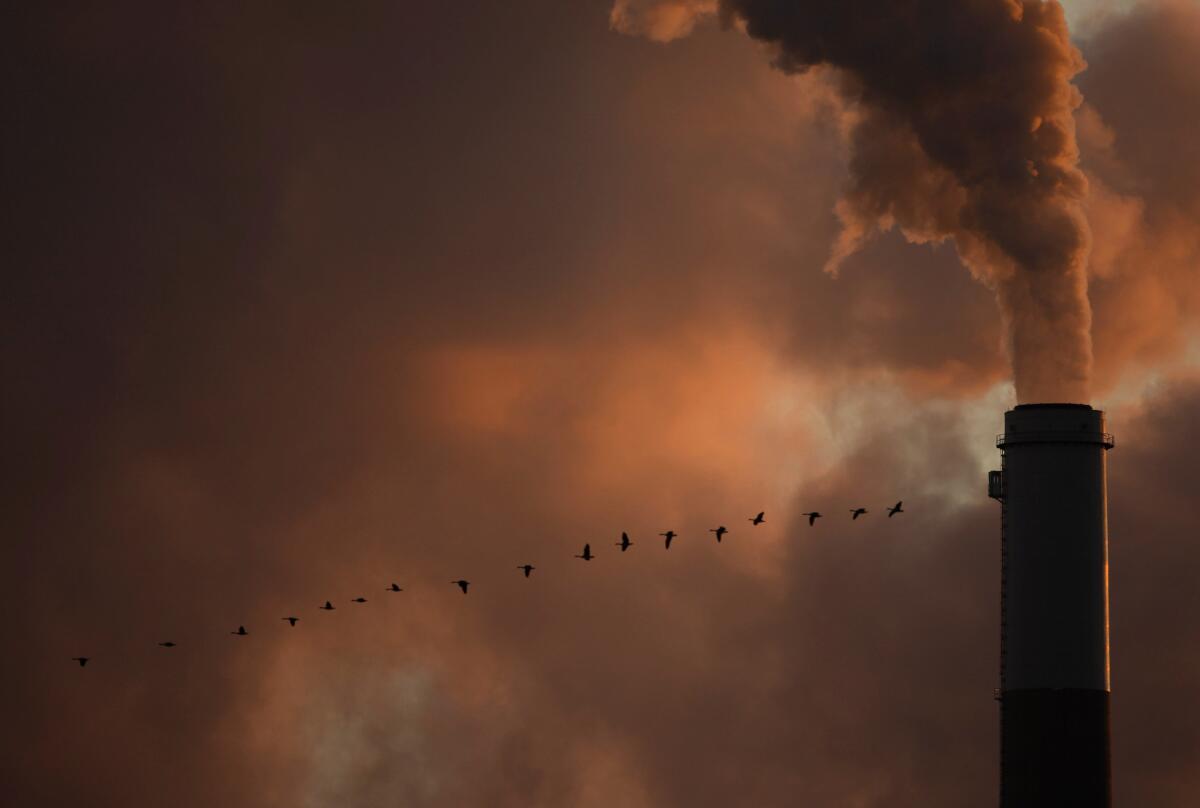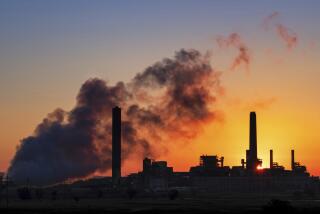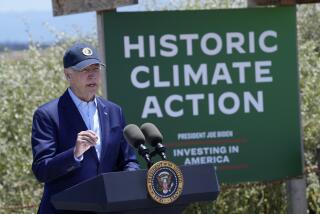New EPA rules would crack down on power plant emissions

WASHINGTON — The Obama administration will propose rules Friday to sharply curtail permissible emissions of carbon dioxide from new power plants, an important step toward fulfilling the president’s recently reinvigorated commitment to address climate change.
New coal-fired plants would have to limit emissions of heat-trapping carbon dioxide to 1,100 pounds per megawatt hour, down from the current range of 1,800 to 2,100 pounds using conventional technology, according to an administration official who spoke on condition of anonymity before the official release of the plan.
Under the proposal, natural gas plants would have to limit their emissions to 1,000 pounds per megawatt hour, a comparatively easy mark. The most modern gas plants already limit emissions to about 800 pounds of carbon dioxide per hour.
It was unclear when the limits would take effect. The proposed rules must go through a public comment period and are likely to be challenged in court.
Power plants are the biggest source of heat-trapping carbon dioxide in the United States. Because of cheap natural gas prices and concerns about the impending regulations, there are only a few new coal-powered plants on the drawing board. But utilities say they want as many sources of power as possible in case the price of one type of fuel rises sharply.
Although the Environmental Protection Agency rules do not need congressional approval, a fight is already brewing. Congressional Republicans, some Democrats and many energy companies say the proposed standards for coal are too onerous and there is no commercially feasible technology to meet them. The new rules, they contend, would essentially prohibit new coal plants and destroy thousands of jobs in the coal-mining industry.
“The job losses are very real to the families, businesses and communities that benefit from coal,” said Laura Sheehan, senior vice president of the American Coalition for Clean Coal Electricity, an industry group. The EPA “says, ‘We can and must embrace cutting carbon pollution as a spark for business innovation, job creation, clean energy and broad economic growth.’ The EPA’s actions will do exactly the opposite.”
Environmentalists hailed the proposed rules, saying the necessary technology is already undergoing tests at power plants around the country. Industry always issues doomsday scenarios whenever new rules are proposed to cut air pollution, they said, but the market develops emissions control equipment to comply.
“The standard makes clear that tomorrow’s power plants won’t be built at the expense of our children’s future,” said Frances Beinecke, president of the Natural Resources Defense Council. “It signals that we’re moving, as a country, to the clean energy solutions we need. And it will help safeguard the most vulnerable among us — our children and elderly people — from smog worsened by climate change.”
In a sweeping speech in June on climate change, President Obama affirmed his commitment to reduce the country’s greenhouse gas emissions to 17% below 2005 levels by 2020. The administration quickly launched several smaller initiatives, such as energy-efficiency efforts. But the president’s most significant move was directing the EPA to propose rules by Sept. 20 to cut greenhouse gas emissions from new plants and by June 2014 for existing power plants.
The carbon dioxide rule due Friday is the EPA’s second run at crafting limits for new power plants. It proposed a rule in March 2012 that it eventually set aside because of fears that it would not hold up against industry lawsuits. The earlier proposal called for a single standard for all new plants, which industry said would have been all but impossible for coal plants to meet. Two standards would theoretically address the emissions differences between natural gas and coal, the two most popular fuels.
The limits — and the fights over them — hinge on how many pounds of carbon dioxide conventional power plants emit per megawatt hour. The coal standard proposed last year was 1,000 pounds of carbon dioxide per megawatt hour, slightly less than the current proposal.
To meet a target of 1,100 pounds of carbon dioxide per megawatt hour, new coal plants would have to deploy carbon-capture and sequestration, or CCS, technology. That entails scrubbing the oil or gas before or after combustion and then storing the carbon dioxide deep underground or using it for operations such as recovering oil from partially depleted wells.
Several carbon-capture demonstration projects are underway in the U.S., including Southern Co.’s $4.7-billion plant in Kemper County, Miss., which is $1 billion over budget and has gotten hundreds of millions of dollars in federal subsidies.
The coal industry and its supporters say the limits the administration is proposing would be so tough and expensive that coal would be essentially barred from the future energy mix. Coal, an abundant fuel source, is important economically and culturally to vital election swing states including Ohio and Pennsylvania.
“In the clean air debate, the technology was available,” Rep. John Shimkus (R-Ill.) said at a House hearing Thursday on climate change. “In the greenhouse gas debate, the technology is not available.”
At the hearing, EPA Administrator Gina McCarthy said the feasibility of the technology “was heavily discussed, and that’s the reason” the agency had developed a new rule. “On the basis of information that we see out in the market today, CCS technology is feasible and it’s available. Coal can have a productive future.”
More to Read
Sign up for Essential California
The most important California stories and recommendations in your inbox every morning.
You may occasionally receive promotional content from the Los Angeles Times.












